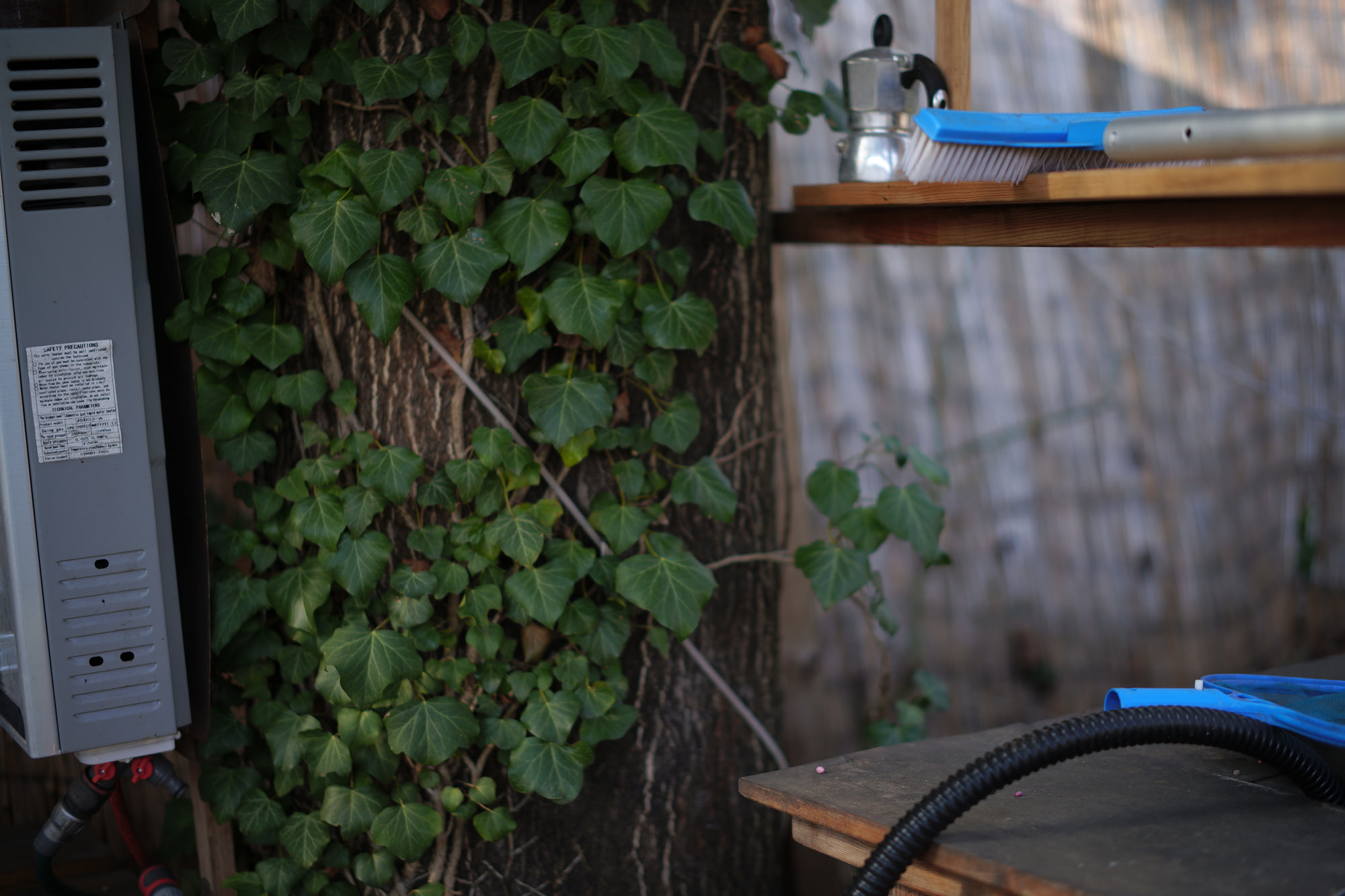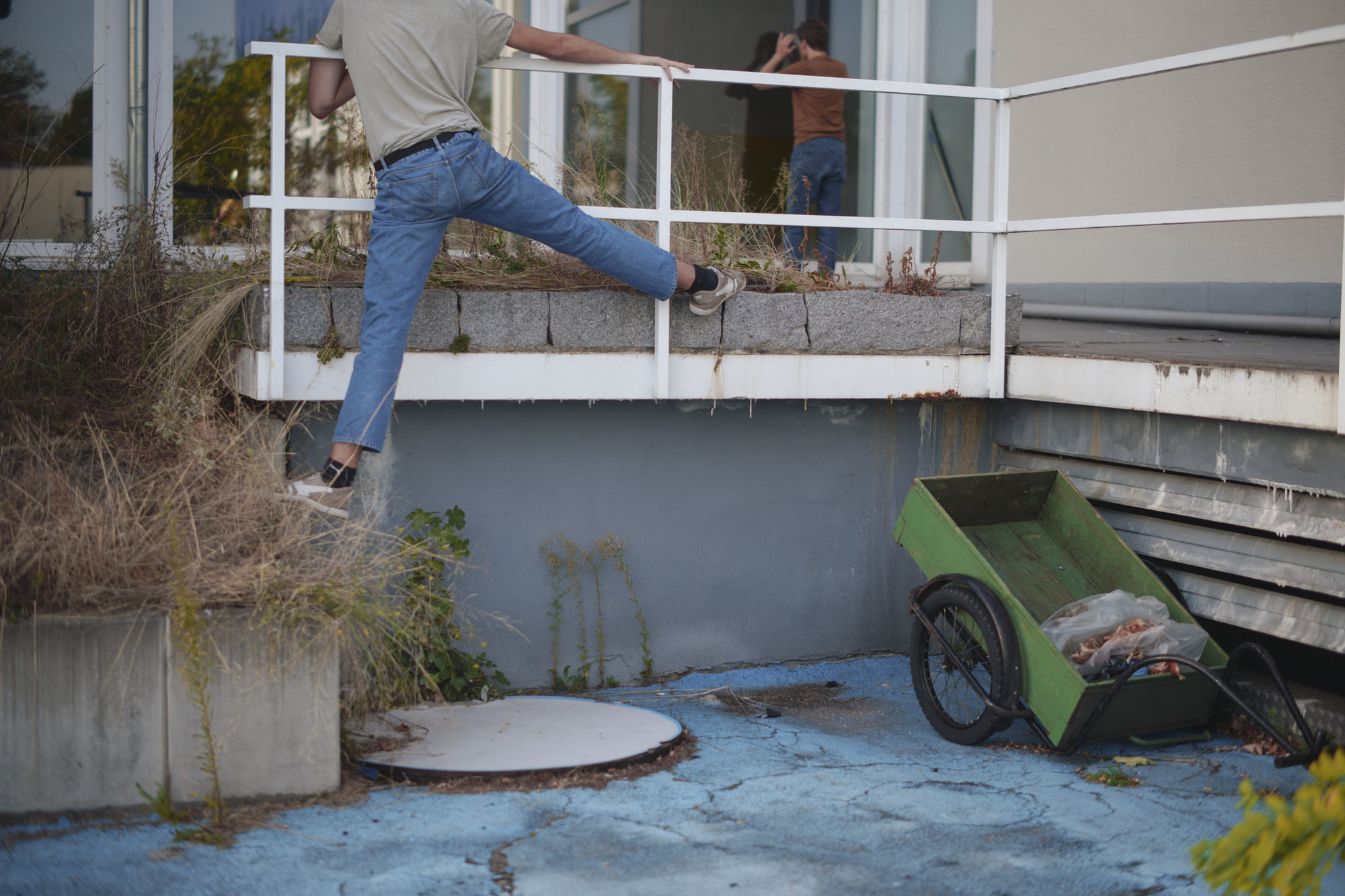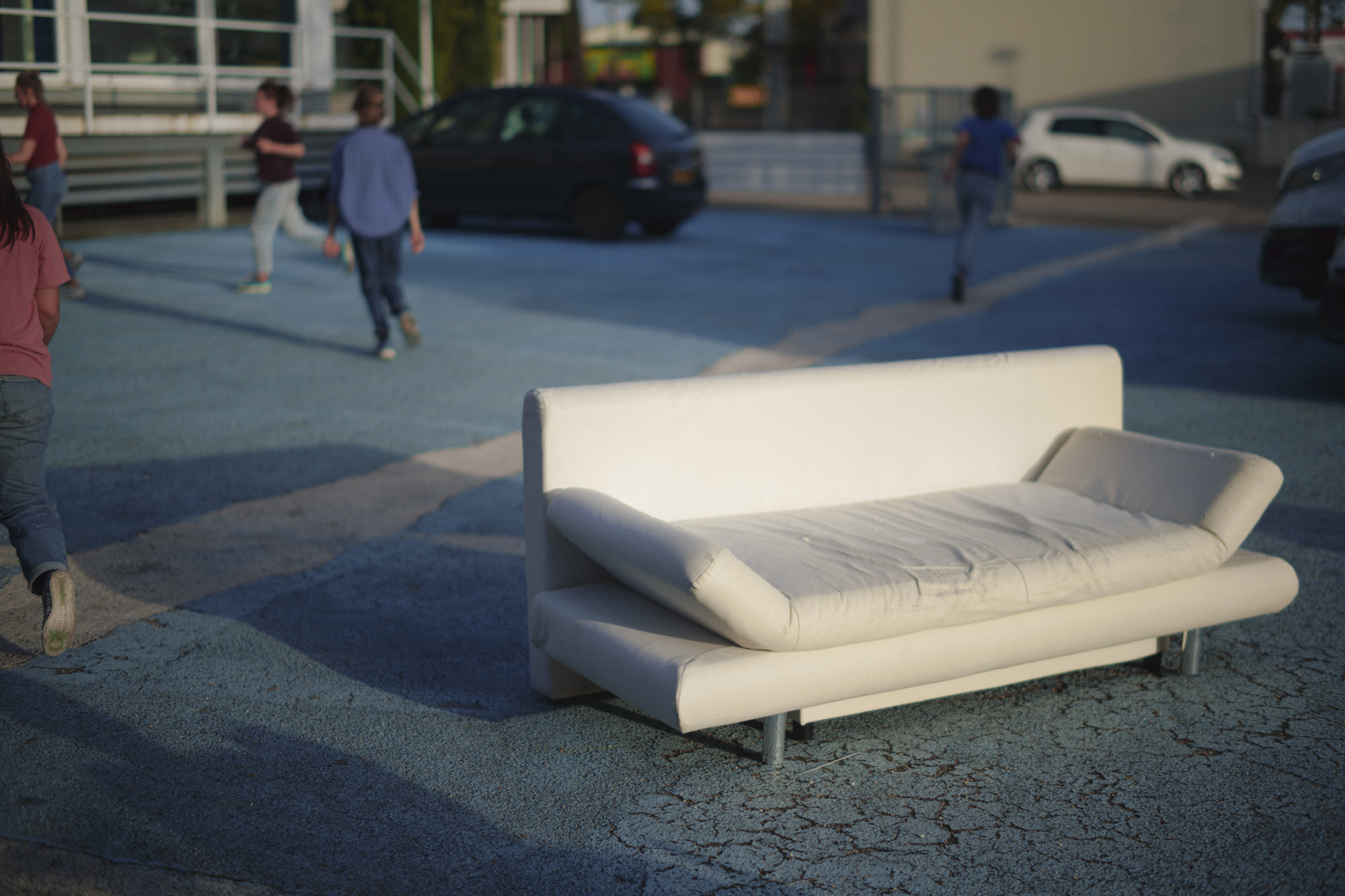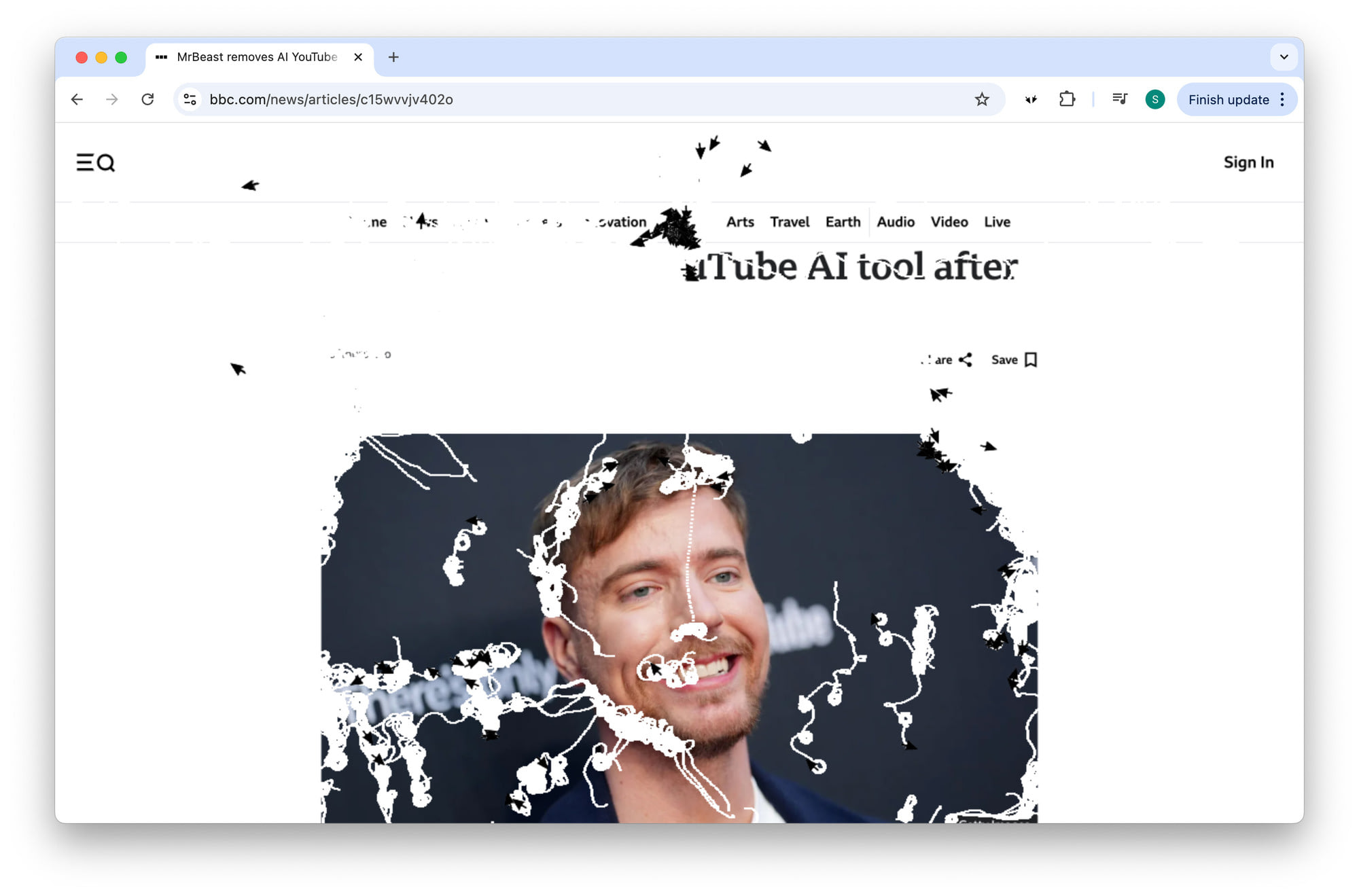
I really hate it when I’m exposed to some horrible news online, and feel powerless. There is nothing I can do, I am not responsible, and yet at the same time I have this feeling “this shouldn’t be happening”.
There is a temptation to immediately react – if it was printed, I would crumple up the paper and throw it away – yet, reading pixels on the screen I don’t have the right gesture to express my discontent.
So I made this little browser extension. Click on a button, and a horde of cursors, like hungry piranhas, will slowly rip the web page apart for you.
Sounds fun? Install on Firefox or Chrome.
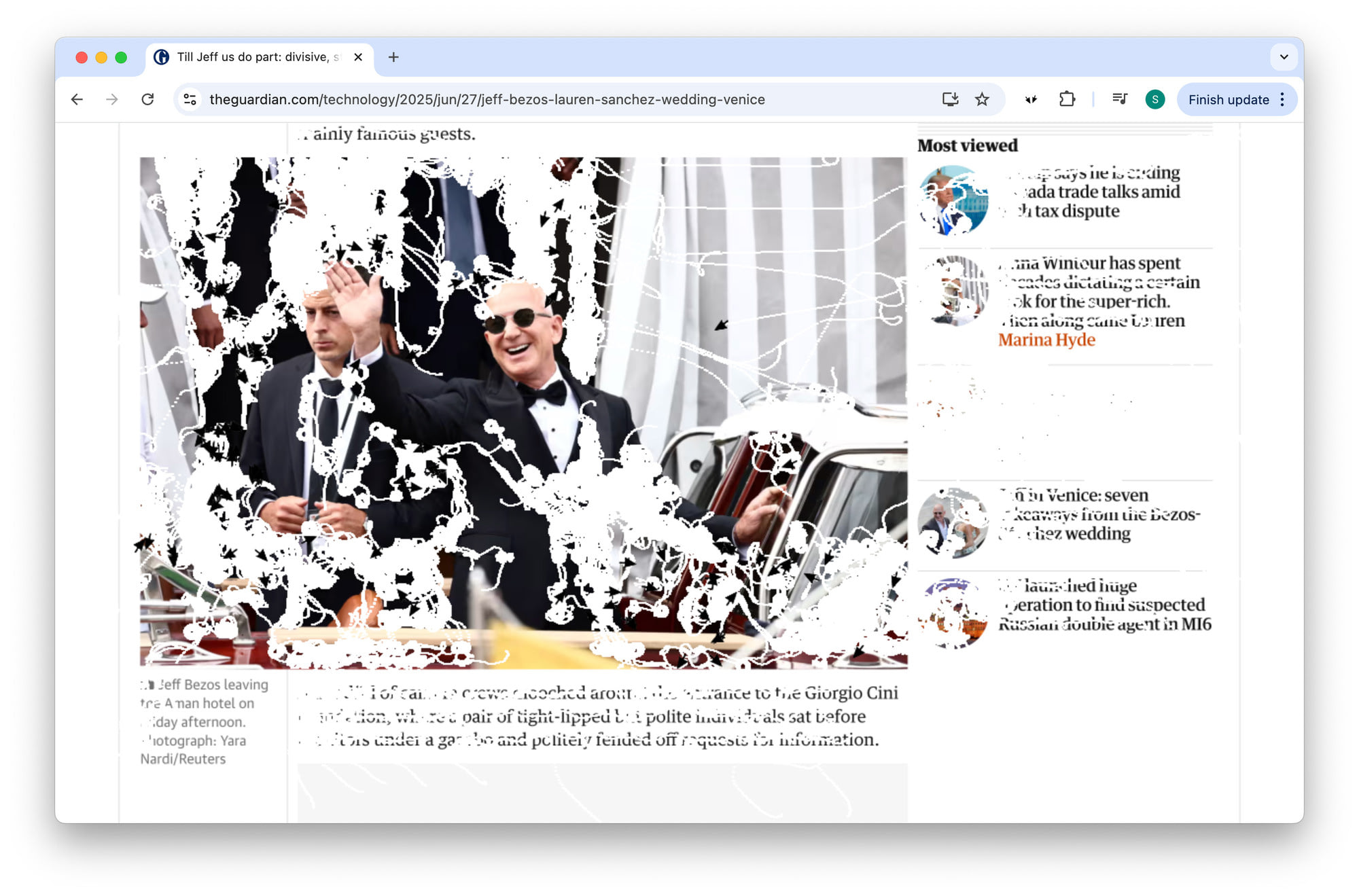
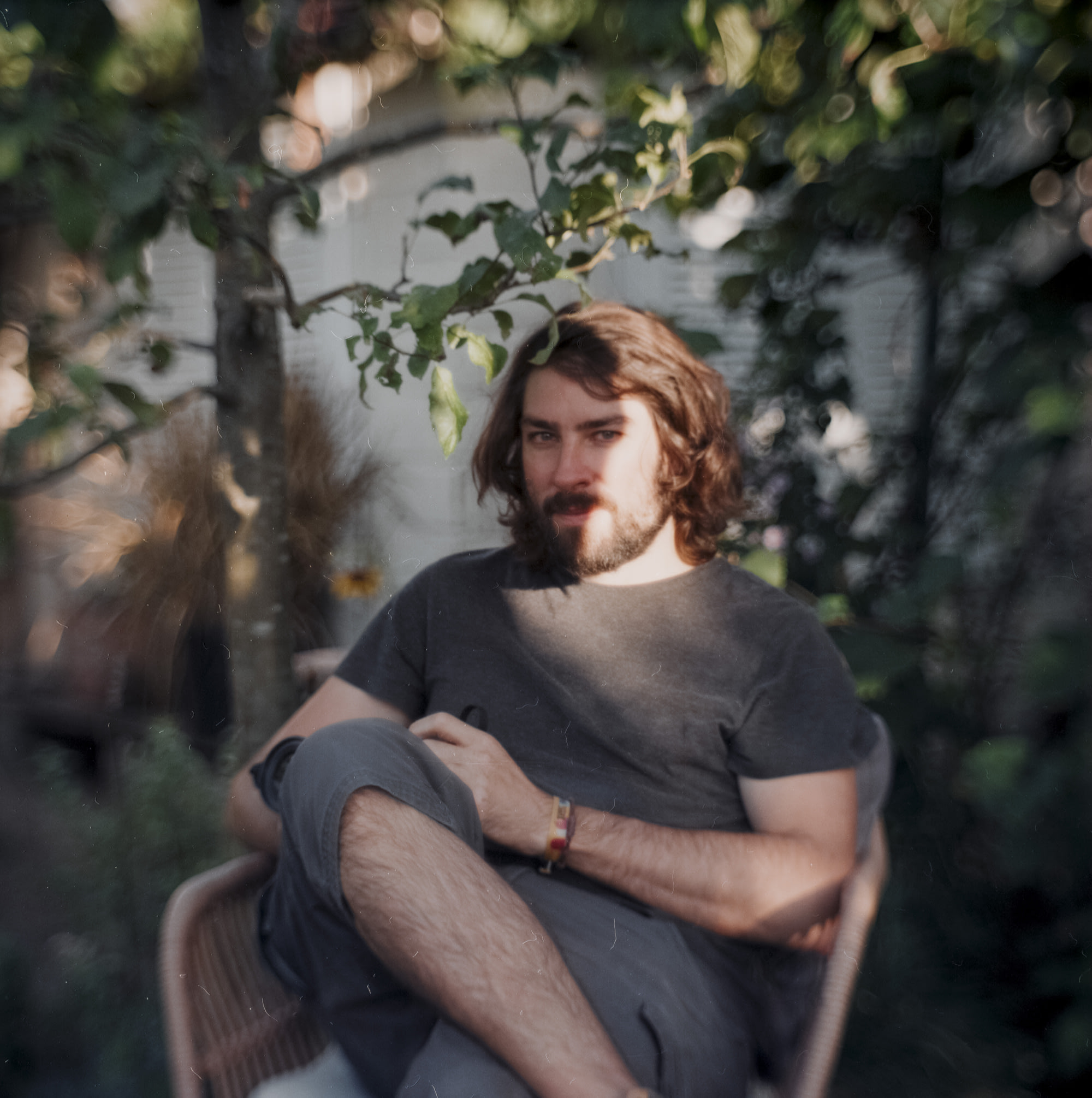
This image is taken with a (60 year old) Bronica C medium format camera, with a (120 year old) Petzval-type lens.
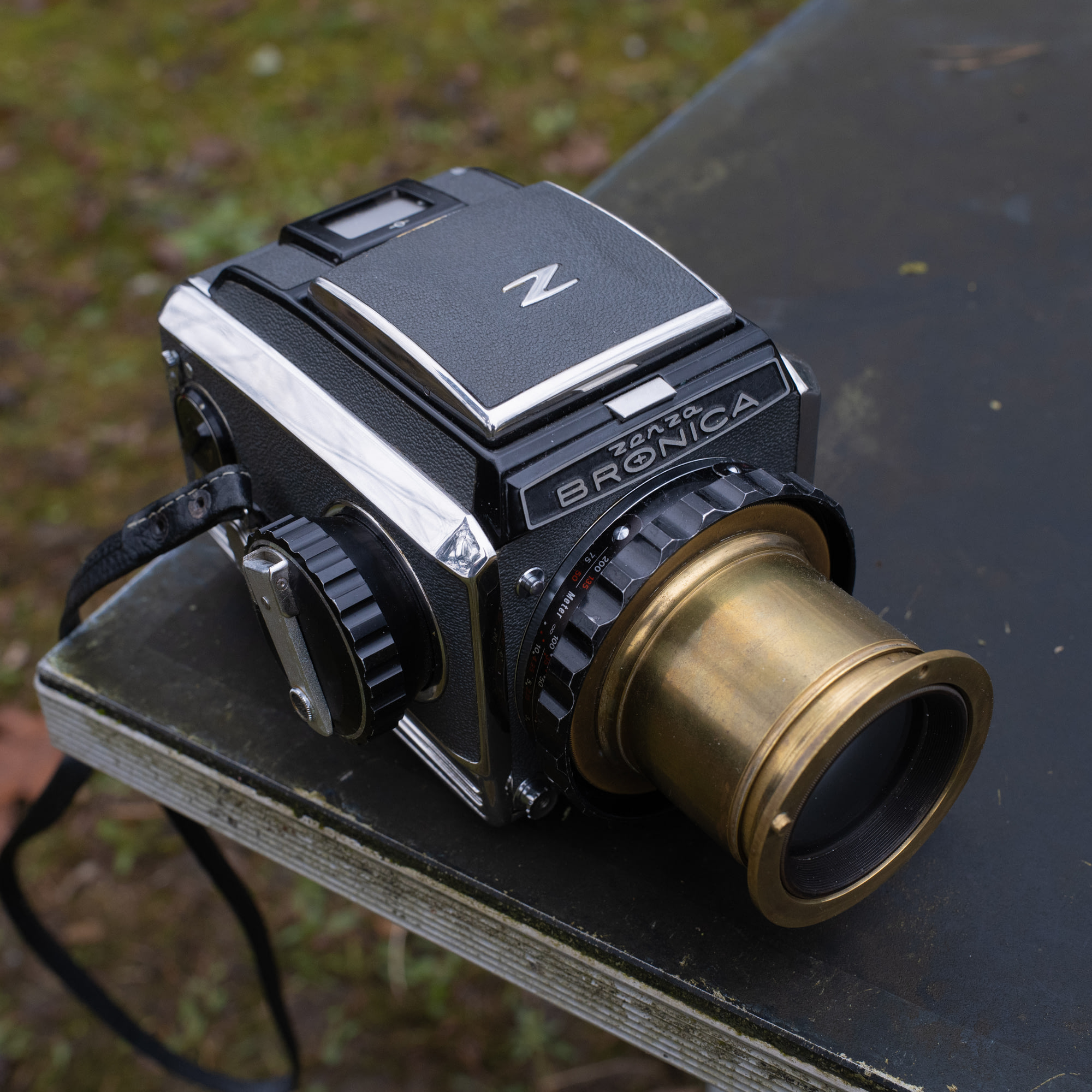
This camera is not only beautiful in a vintage car sort of way, but is also uniquely suited for adapting old lenses on medium format. On a typical camera, the lens houses the helicoid, the mechanical corkscrew-like part that moves the optics closer and further away from the subject allowing you to focus properly. On the Bronica, the helicoid sits between the body and the lens, and so you can adapt all kinds of weird lenses onto it. This particular lens probably stems from the late 19th, early 20th century. It has no markings on the body, but as I disassebled it to clean the glass, I found the inscription “A. Laverne & Co. Paris” on the rim of a glass. There were quite a few small optics manufacturers in the 19th century - the startups of the era.
The Petzval lens type was the first portrait lens design, created in 1840. It has with two elements at front and two at the back, and has a strong sharpness drop towards the corners. No, wait, it’s more accurate to say that only what’s in the center can ever have a high enough resolution. (Unless of course, you move the lens off-center, like you can with a large format camera). But sometimes, this lack of sharpness and the disquiet character of the rendering is what we are after.
Shoutout to Chris and Lina who were so patient with me on this August afternoon!
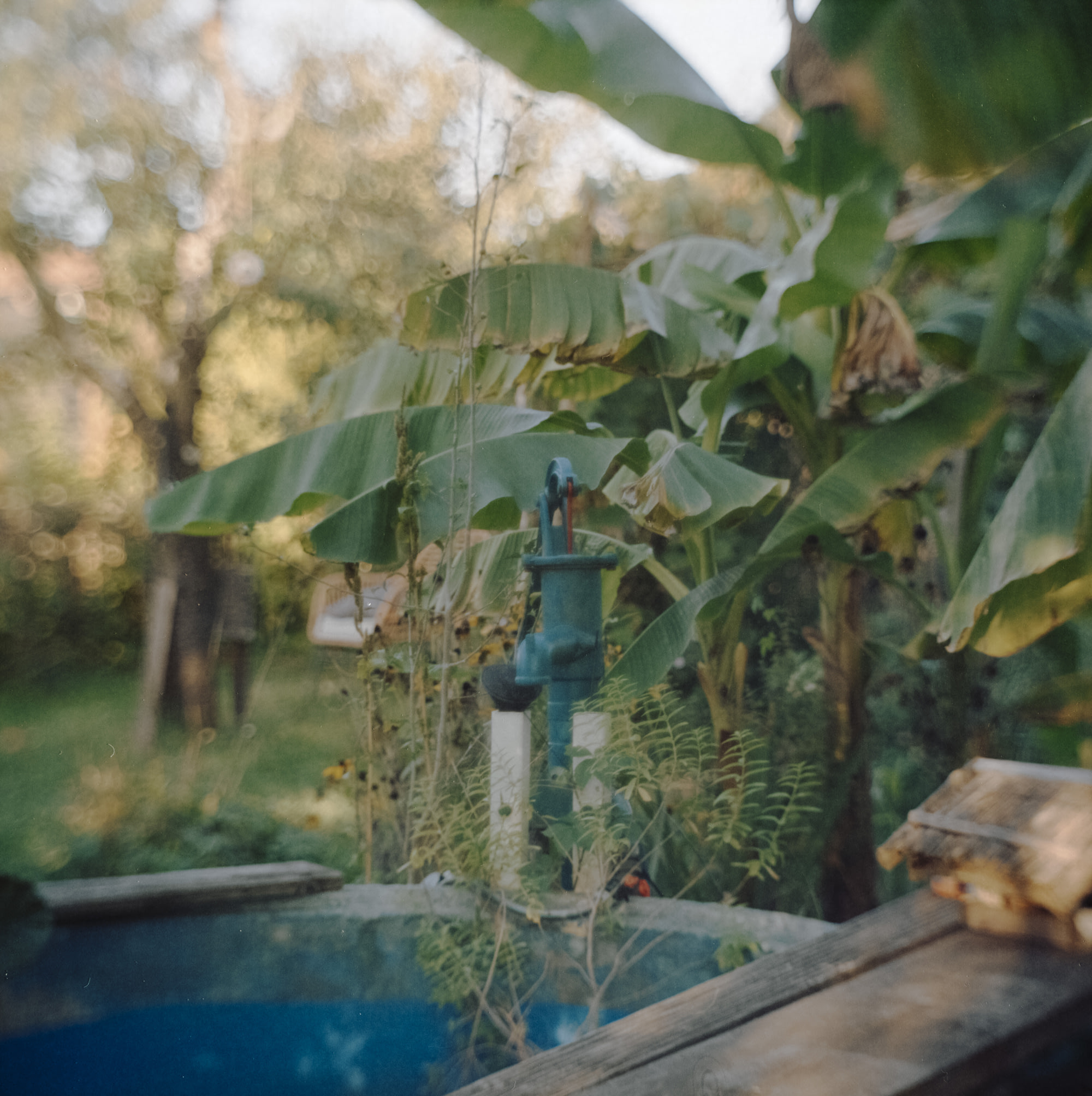
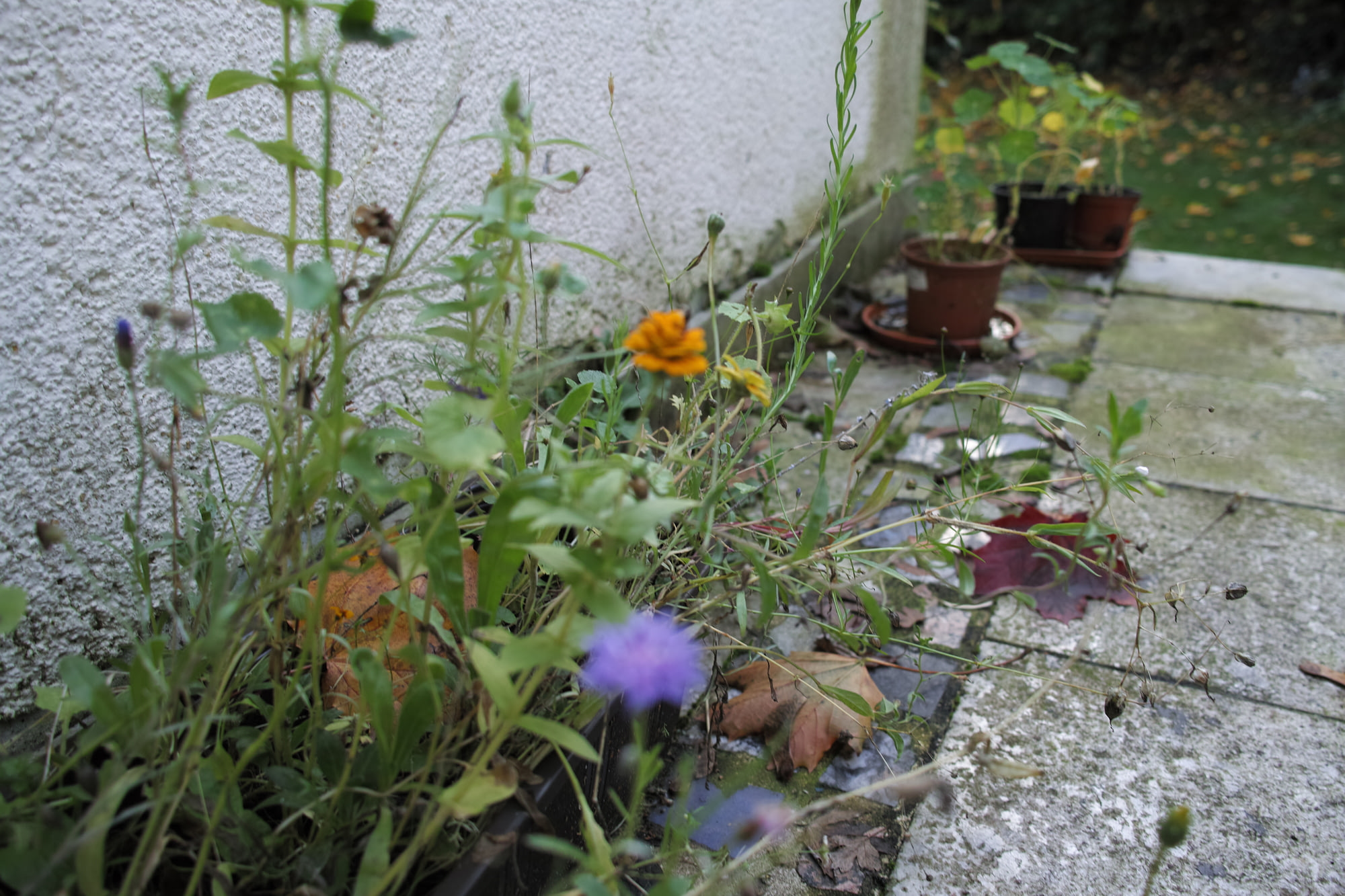
Sometimes I get tired of the usual composition, of the trained way of seeing. Lately I tried to make photographs that not only depict nothing in particular, but also guide the attention of the viewer around, showing nothing.
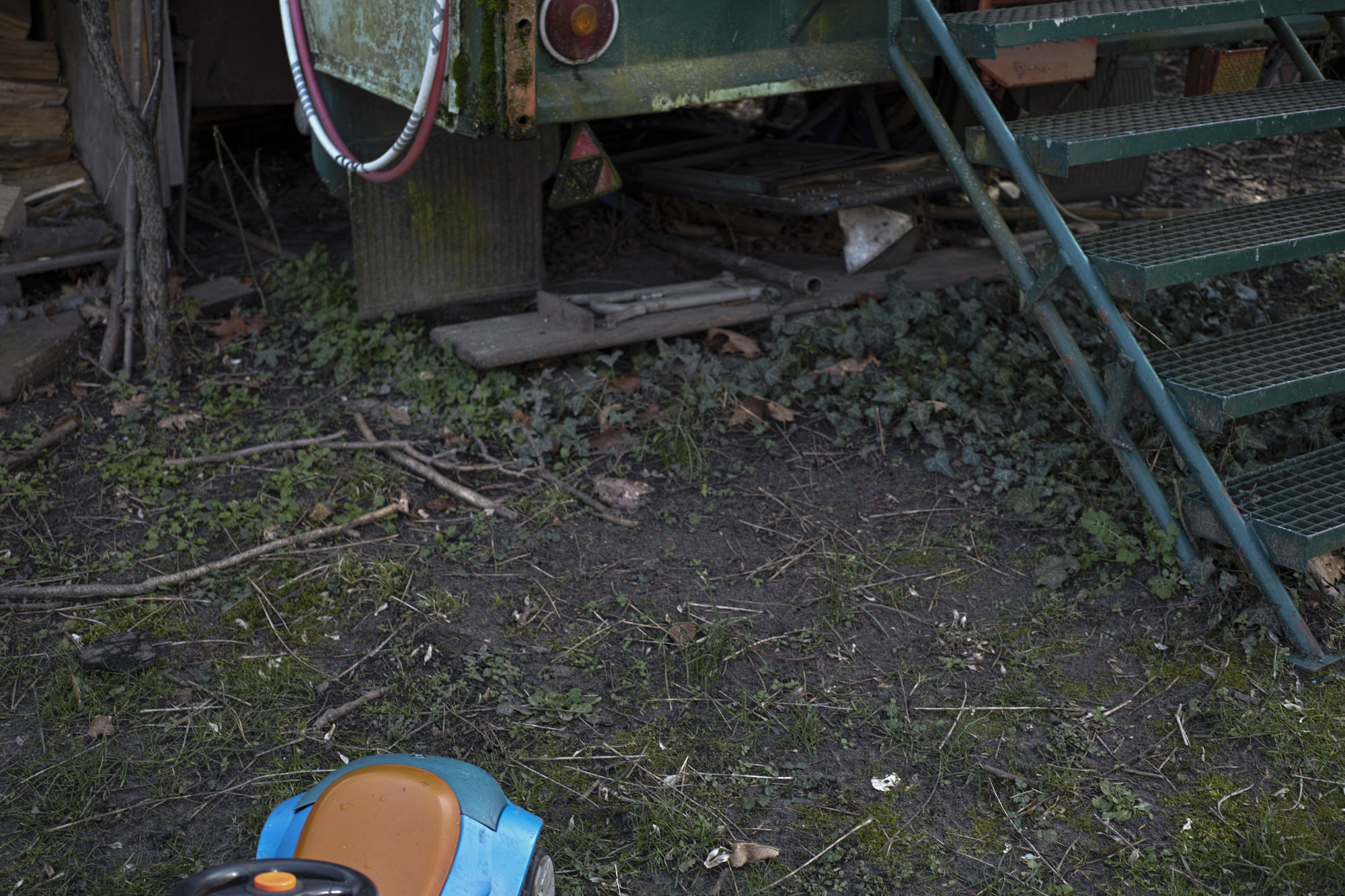
The colors guide you in one direction, the focus in another one, and the composition a third. Its only value lies in the movement of the viewers eyes, in the choreography of the gaze.
